Here I’d like to introduce Ise JIngu and a sightseeing street called Okage Yokocho in front of the Ise Jingu Shrine.
Both Ise Jingu and Okage Yokocho street was amazing, as well as the local food over there, such as Ise Udon, Tekone Zushi and Akafuku.
What is Ise Jingu?
Ise Jingu is one of the most important shinto shrine of Japan; it is dedicated to a major deity of the Shinto, Amaterasu-Omikami.
In May 2019, the new “Reiwa” era has started in Japan and we had a long holidays here, from April 27th to May 6th. During this holiday, the number of visitors to the Ise Jingu rose to around 880,000, more than doubled compared to the same period last year, according to the several newspapers in Japan. Many people went there to celebrate the dawn of the new era and as you can see from this fact, that Ise Jingu is very historical, important shinto shrine for the Japanese.
Where is it located?
It is located in Ise city, Mie Prefecture. You might wonder where the Mie Prefecture is, so let’s see the map below. It is in the Chubu region, between Osaka and Tokyo.
The closest airport to the Ise Jingu is Chubu Centrair International Airport, however not many people fly first to this airport I guess.
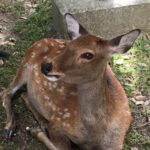
According to the ranking of Japanese airport’s annual passengers (as of 2018), the most used airport in Japan was Haneda in Tokyo, then Narita and Kansai. The Chubu Centrair airport was on the eighth place.
If you’re visiting Ise Jingu from Tokyo, Osaka or other big cities, then you can take Shinkansen or trains. You can come to Nagoya by Shinkansen, then catch the train from there. It might take some time, but in my opinion, it is worth visiting.
If you’re thinking about traveling around in Japan, it might be a good idea to buy “Japan Railway Pass”, you can check for it!
Ise Jingu
Ise Jingu has “Gegu” and “Naigu” and it is recommended to visit Gegu first and then visit Naigu afterwards. But when I visited there I didn’t have enough time, so I just visited Naigu. (I’m sorry..)
Uji Bashi (Bridge)
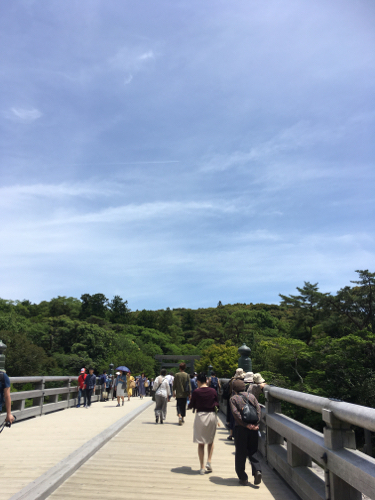
First you will see the big bridge called “Uji Bashi” at the entrance of Naigu. This bridge is said that it connects the ordinary world (where we are) and the sacred world. (Naigu)
The present Uji bridge was built in 2009; it is rebuilt every 20 years, four years prior to the “Shikinen-sengu“.
At Ise Jingu, “Shikinen-sengu” is the very important ritual; it involves moving the palace to the new sanctuary. It has very long history, first one conducted in 690.
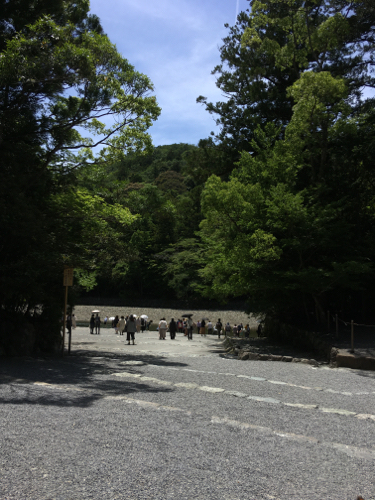

Inside the Naigu, there are many spots where you cannot take pictures. So please, please be aware!
You can rent a wheelchair
You can rent a wheelchair to visit Naigu at the entrance of Naigu, just before the bridge, if you need one. (though you need to give them your name, adress and your mobile number). At most parts, it is wheelchair accessible.
When I visited there, I also rented one for a grandpa, and this experience became very special to me! (my story is in the box below. If you’re not interested, you can just skip it)
When I visited there..
I met 97-year-old man. In Japan we call old man “grandpa” (おじいちゃん) in
general, even though we’re not related at all. Anyways, apparently this
97-year-old “grandpa” came all the way from Hokuriku region, all by
himself to Ise Jingu! It was really a hot day and he was exhausted, so I
offered him a help. I went back to the entrance and rented a
wheelchair, and we visited Naigu together.
I
asked him the reason for the visit, and he told me really touching
story; he went to the war when he was young. Before going to the war,
his parents went to the Ise shrine and prayed for his life, gave him a
good luck charm. He went to the war with that charm and he survived. He
said there were 70 people but only 7 people survived, including him.
He
thinks he survived because the god of Ise Jingu had protected him, so
he wanted to say “thank you so much for my life” to the Ise Jingu.
He had a wife and she had died couple of years ago, but he had her picture in his bag, so that he could pray together with her.
I was so moved by this story. He is 97 years old and he came all the way by himself, to say “thank you!”.
Meeting with this grandpa, my visit to Ise Jingu became even more special.
Enjoy Okage Yokocho and Shops Around
After visiting Ise Jingu, you can go to the Okage Yokocho Street, located just in front of the Ise Jingu. This is where you can feel the atmosphere of Japan, from the end of Edo era to the beginning of Meiji era. There are many shops and restaurants around and here you can have the local food, Ise Udon and Akafuku etc.
Ise Udon
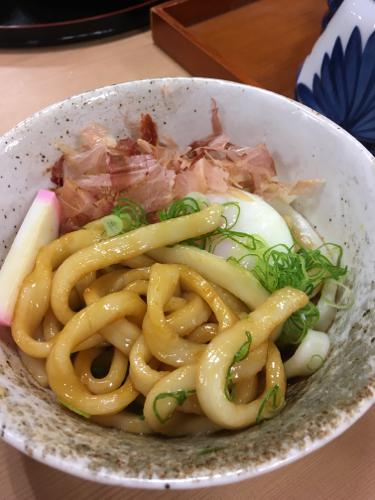
Ise Udon is literary the local food of “Ise” city, Mie Prefecture. What’s special about Ise Udon is, unlike the normal udon (noodles), it is served without soup. Instead, you eat it with brown-coloured sauce (the taste of this sauce varies, depending on the restaurants.) Also its noodle is usually softer and thicker than the normal udon.
Tekone Zushi
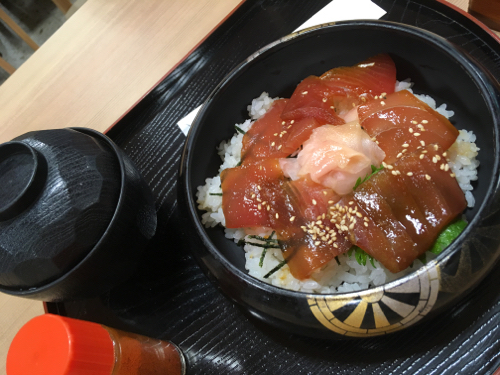
Tekone Zushi is the local food of Ise Shima and Toba area; the bonito (katuo) or tuna(maguro) is marinated in soy sauce, served on the sushi rice. It was invented by the fishermen apparently, and there are many restaurants serving Tekone Zushi here.
Akafuku
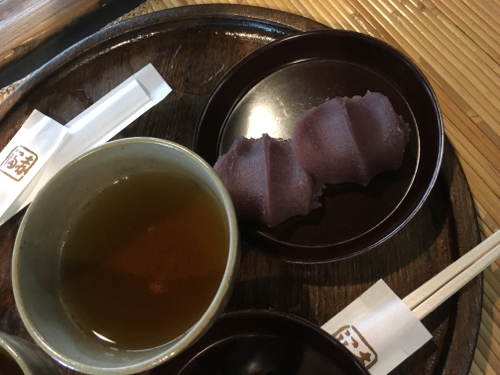
Akafuku is also the speciality of Ise, it is like a mochi (rice cake) coated with red bean paste. It is sweet, soft and very famous; so famous that you could buy it at Nagoya station or even at Kyoto station etc. However, it is usually said that the place where you can have the best Akafuku is here, at the main store.

This is the main store, so cool! Its building is around 140 years old (built in Meiji era) according to the official website of Akafuku.
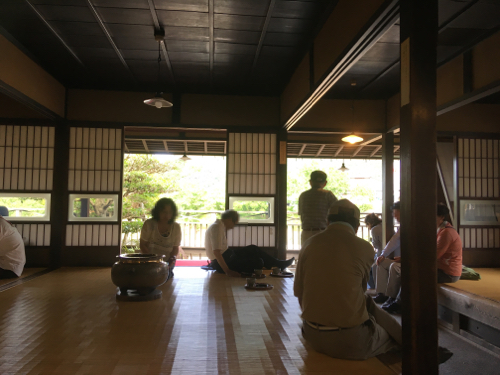
This is the inside of the store. You can eat Akafuku inside, the staffs there would kindly serve you a cup of tea. You can rest there while eating Akafuku.
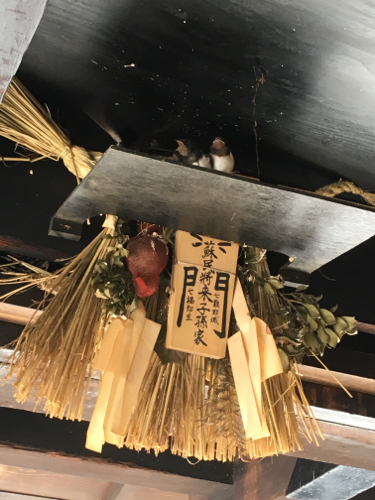
In spring, you might be able to see swallows living there, inside the store. They are said to be bringing the fortune. They are adorable!
Soft cream, Senbei.. and more
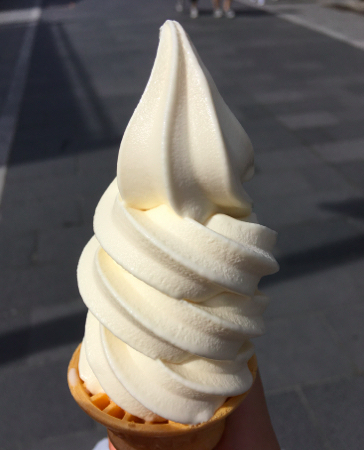
There are lots of restaurants and shops there, so you can try more! I tried tofu soft cream and spicy senbei (rice cracker) at different shops. For the spicy senbei, there were other tastes too, so if you do not like something spicy, you can choose sweet ones.
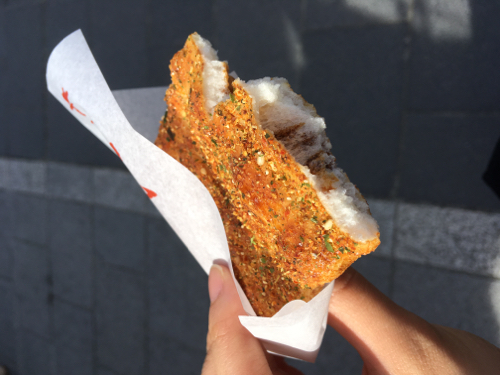
They were all good, I highly recommend all of them!

You might eat some food outside, but please put your rubbish into the bin, so that we can protect the city 🙂
Enjoy!
Ise Jingu was beautiful, sacred and amazing place to visit; the Ise city itself had some kind of special, historical atomosphere. Also around Ise Jingu, there are many shops and restaurants and there you can enjoy many Japanese food, and they were all nice!
I hope you enjoy visiting Ise Jingu.

